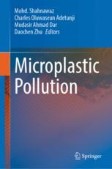Search
Search Results
-
Hydrolytic-Assisted Fractionation of Textile Waste Containing Cotton and Polyester
Resulting properties of cotton and polyester blends make polycotton the most common fabric in textile industry. Separation technologies are key for...

-
Modeling of Elastic Properties of Twisted Polyester Textile Threads
Modeling of the elastic properties of twisted polyester textile threads was studied. A decrease of the degree of twisting of the textile threads in...

-
A Study on Moisture Transport Properties of Polyester Knit Fabrics for Application in Textile Products
In this study, we prepared absorbent polyester (PET) knit fabrics with various weights and thicknesses, and then systematically measured their...

-
Oligomers are a major fraction of the submicrometre particles released during washing of polyester textiles
Synthetic textiles are a significant source of microplastic fibre pollution. While the microplastic fibre release mechanism during the washing of...

-
A Data-Driven Approach for Predicting Industrial Dyeing Recipes of Polyester Fabrics
Polyester is extensively used in the textile industry for fabricating fibers and fabrics. Dyeing for polyester fabrics has a huge demand. Given that...

-
Valorization of PES Textile Waste Through Glycolysis and Aminolysis Using Bimetallic ZnO and Carbon Nitride Nanocomposites
Chemical recycling of polyester (PES) textile fibers is a promising technology that has the potential to reduce the environmental impact of the...

-
Use of Hydrophilic Nanoemulsions in Finishing Processes of Textile Materials
Results from a study of the properties of hydrophilic aminoorganosilicon nanoemulsions designed for surface modification of textile fibrous materials...

-
Development of Catalytically Functionalized Polyester-Based Filters Produced by Flame Spray Pyrolysis
For industrial processes—like waste incineration—it is necessary to reduce solid components (like dust or fly ash) as well as gaseous components...

-
Concurrent Dyeing and Finishing of Textile Fabrics Using Chemically Modified Peanut Red Skin Extract
Progressive environmental awareness and legislation regarding the pollutants discharged from textile coloration plants allocate natural colorants in...

-
Multi-objective Optimisation of Antibacterial Activity and Comfort of Knitted Fabrics Made from Polyester-Silver Nanocomposite Fibres
Textile materials have long been recognised as media supporting the growth of microorganisms. For various applications including sports apparel,...

-
Research Progress and Development Trend of Textile Auxiliaries
Textiles hold a position of great importance in both the routines of everyday life and the intricacies of industrial production. Textile auxiliaries...

-
Application of Bio-Based Haematoxylum Campechianum L. Dye on an Air-Atmospheric Plasma-Treated Polyester Fabric
Coloration and surface modification of woven polyester (PET) fabric with bio-based Logwood dye and plasma technology have been researched to develop...
-
Study of moisture management properties of tri-layer knitted fabrics made from hollow polyester, bamboo, spun polyester and polypropylene
A specific knitting structure was developed using bamboo, polypropylene, hollow polyester, and polyester staple fiber yarns on the face and reverse...

-
A review on polyurethane based multifunctional materials synthesis for advancement in textile coating applications
Polyurethanes (PUs) are among the most commonly used, versatile, and scientifically studied polymer in the world. It is an essential polymer to...

-
Polyester Resins as Modifiers of the Properties of Bitumen
The possibility of synthesizing polyester resins and using them to modify the properties of bitumens is demonstrated. The polyester resins were...

-
Biopolymers in Textile-Based Insulation Materials
Textile products are currently being used as thermal barriers in a variety of industrial applications. Textile fabrics’ thermal insulating...
-
Simulation of Deformation Processes in Polyester Twisted Yarns
The deformation-elastic properties of polyester yarns with different levels of twist are simulated. Reduction in the twist level within permissible...

-
Microplastics Originating from Paints and Synthetic Textile Materials
There is continued growth in paints and synthetic textile materials production and consumption due to expanded use of paints in different...
-
Development of Silicone Based Waterproof Polyester-Cotton Canvas Fabrics for Auto Rickshaw Cover
In recent years, silicone water repellents have been used extensively in coating technical textiles. Canvas is one of the technical textiles made...
-
Substantial Functional Finishing and Transfer Printing of Polyester Fabric Using Zinc Oxide/Polyurethane Nanocomposite
Functionalization of the textile surface plays a remarkable role in the synthetic fiber industry. This research is interested in the one-step...
